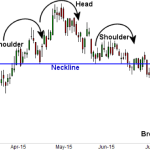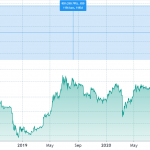Just because we live in an age of many sensors doesn’t mean we always have the right one for the job. One in particular we’ve been lacking is a radar system that can detect obstacles and aircraft hundreds of meters out, yet fit comfortably on a small drone. The laws of physics, it seemed, prevented it — but Echodyne made it work anyway. And it’s ready to put out its first product.
The problem isn’t that the drone in your back yard doesn’t know where a tree is (it does) or that cars can’t tell how far they are from one another (they can). It’s that if you want to fly a few hundred feet up, you start having to worry about helicopters, small planes, and if you get high enough, commercial jets. You need to see hundreds or thousands of feet out to effectively accommodate them (it’s called “detect and avoid”), and at that range no optical, lidar or ultrasonic sensor in the world is reliably effective.
Radar is generally the answer, but there are two issues: first, a decent phased-array radar is going to be pretty big, and second, we’re talking six figures out of the gate. Neither of these are friendly to small drones or small companies.
Echodyne’s radar is a fraction the size and price, but performs many of the same functions — some better than the big boys. How is it possible? By rethinking the entire system using metamaterials.
Making MESA
We won’t get too deep into the technical side of things, but here’s the deal. Phased-array radars use a grid of antennas that, by emitting radio waves in precisely defined patterns, can steer a radar beam in a desired direction. By doing this multiple times per second, you can scan the beam over a whole field of view without ever moving the device itself.
It’s a must-have capability for high-altitude drones, which must scan a large area in front of them for oncoming air traffic — and by must-have, I mean they really must have them. The FAA says so.
The trouble is these devices have proven hard to miniaturize beyond a certain point because of the amount of electronics involved: the antennas must be a certain size to work with a given wavelength, their controllers take up space, there’s processing for received data, and so on.
Echodyne uses what’s called a metamaterial to create that phased array on a much, much smaller scale. Instead of dozens of individual antennas, the device uses a surface with a carefully engineered 3D pattern that allows beams to be propagated in much the same way — but with more precision and lower power.
It sweeps across a maximum of 120 degrees horizontal and 80 degrees vertical (azimuth and elevation, if we’re being aeronautical), a field of view roughly equivalent to a human’s. That isn’t an accident: these systems are meant to be a replacement for the vigilance of a pilot, onboard or remote. An effective replacement for human visual acuity and search capability is a prerequisite for autonomous flight outside the operator’s line of sight.
 Inside that window, the “metamaterial electronically scanned array” or MESA can spot a small plane like a Cessna at 2 kilometers out, a quadcopter-size drone at 750 meters, and a bird at 250 meters.
Inside that window, the “metamaterial electronically scanned array” or MESA can spot a small plane like a Cessna at 2 kilometers out, a quadcopter-size drone at 750 meters, and a bird at 250 meters.
I saw this capability myself out behind Echodyne’s headquarters, where, although one demo drone had been stuck in a tree earlier that week (operator error), another participated in a live demo. Flying out well beyond my own ability to see it, and beyond lidar or optical detection range. But it was clear as day on the radar display: a set of dots blinking their way outwards, with stationary dots indicating trees and other obstacles. (Its angular resolution is about 1×3 degrees.)
Echodyne tested this capability late last year:
Now, it takes the beam about a second to sweep the whole area, but because the beam can be directed at will (no need to turn a dish), if it detects an object, it can dedicate extra resources to tracking it more closely. So it can keep one eye on the sky while another watches a suspicious drone with more frequent pulses. Focusing this way also lets the radar determine velocity, Echodyne claims, down to within 2 meters per second.
It accomplishes all this in a package about the size of a couple iPad Minis, weighing a pound and a half, drawing only 35 watts of power. Systems with comparable capabilities might be ten or twenty times bigger and more power-hungry. The only real catch is that the range is shorter than the larger systems — they might see a plane 12km out. But as Echodyne pointed out to me, quadcopters aren’t flying at 300 knots; it’s more important to locate closer, more active threats and obstacles.
At ten grand, you won’t be buying a MESA to mount to your bike, but if you’re Amazon or Uber or anyone looking into commercial applications for drones, it’s more than a little enticing.
1. Plug in 2. Profit
Beginning to see how this could seriously change the game? Prosumer drones can be given the sensing capability of craft far larger and far more expensive, making them smarter and safer to operate. This kind of boost opens up a whole host of possibilities.
“We’ve had phone calls from every application you can think of,” said CEO Eben Frankenberg. “For the first time, you can get the equivalent of a teeny phased radar, and people are like, ‘oh my god, I can do this now!’”
Smaller drones can see better, bigger craft can pop a few on and see more, and in a whole new industry, counter-drone operations get a cheap, easy-to-deploy detection system.
 This last one is particularly promising. “Security has gone from a 2D problem to a 3D problem,” Frankenberg noted. Prisons need to keep drug-carrying drones away from the walls. Private testing facilities have to watch for them on the perimeter. And someone might have said something about a wall.
This last one is particularly promising. “Security has gone from a 2D problem to a 3D problem,” Frankenberg noted. Prisons need to keep drug-carrying drones away from the walls. Private testing facilities have to watch for them on the perimeter. And someone might have said something about a wall.
A phased or moving radar array is clunky and expensive — like 7 figures expensive. A MESA drone-detection setup might cost $20-30,000, weigh a quarter as much, and could run for a week on a car battery. Given the choice, the latter seems a no-brainer. And if you want it to fly, there’s no choice: try lifting a 30-pound phased array with a Phantom.
The origin of the metamaterial radar goes back through Intellectual Ventures, which picked up some promising academic work years ago and incubated it internally. It holds the patents, which Echodyne licensed and engineered for its own purposes. The company raised money from a group of Seattle investors including Bill Gates and Paul Allen during its R&D period, and is continuing to raise on the strength of its first product, for which interest runs high.
MESA still needs to be evaluated by the FCC, and the FAA is still working on the rules that will govern unmanned aircraft outside line of sight. But given the delta in price and performance between these sensors and the incumbents, it seems almost a foregone conclusion that MESA-type sensors (larger, smaller, or otherwise customized) will be all but mandatory for drones and detection stations in the near future.










